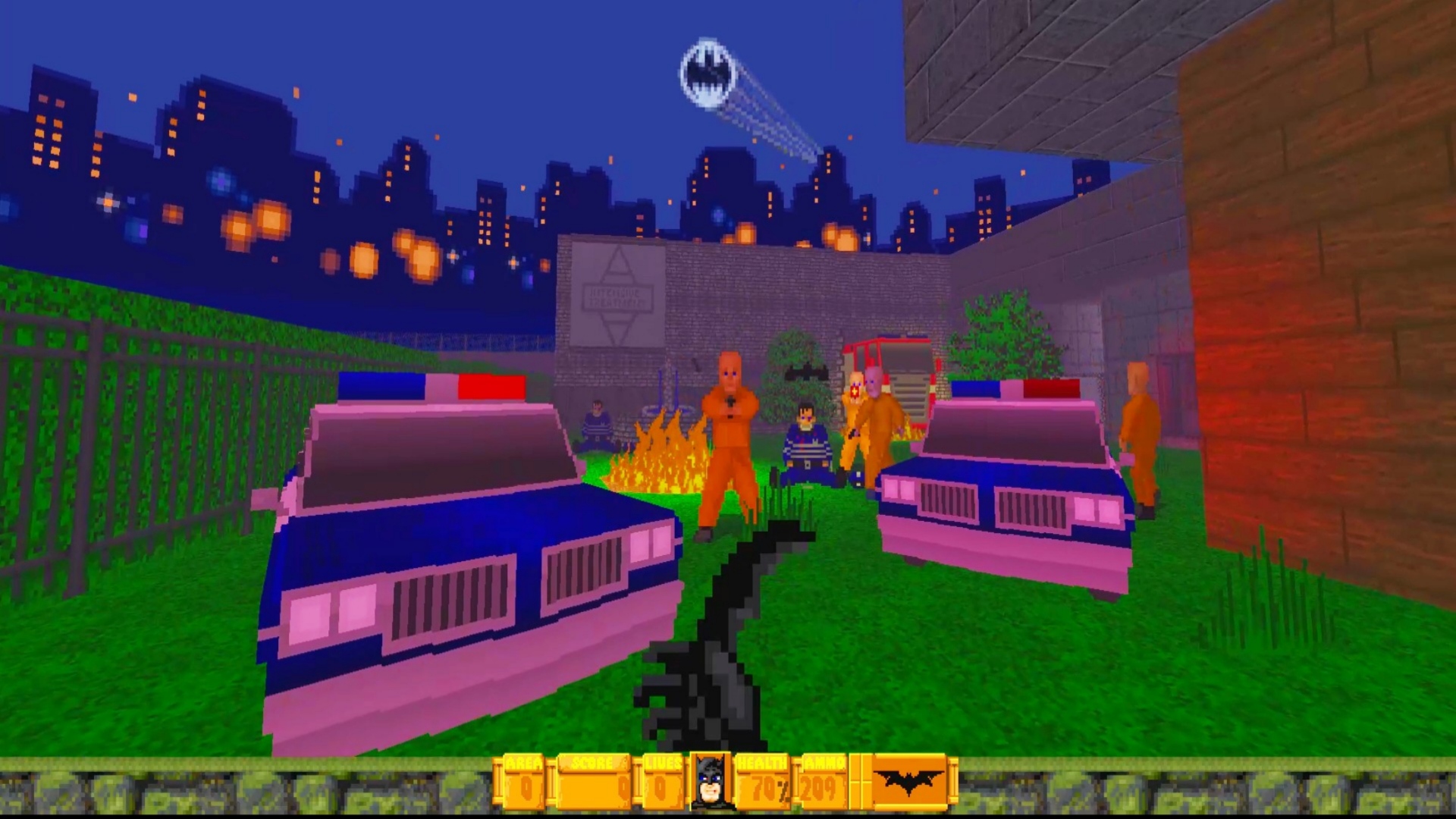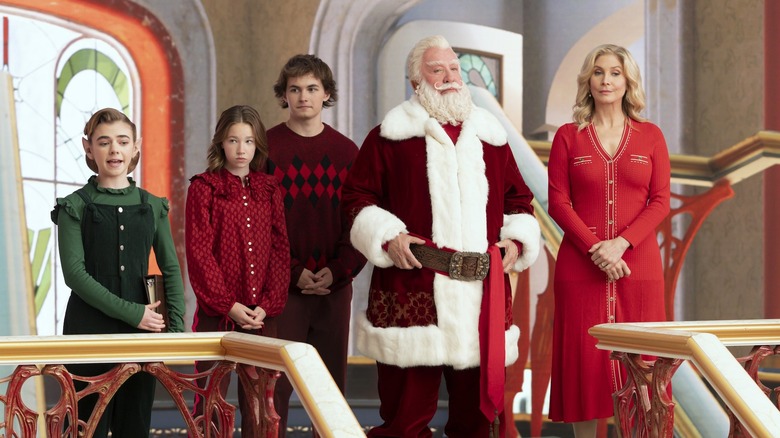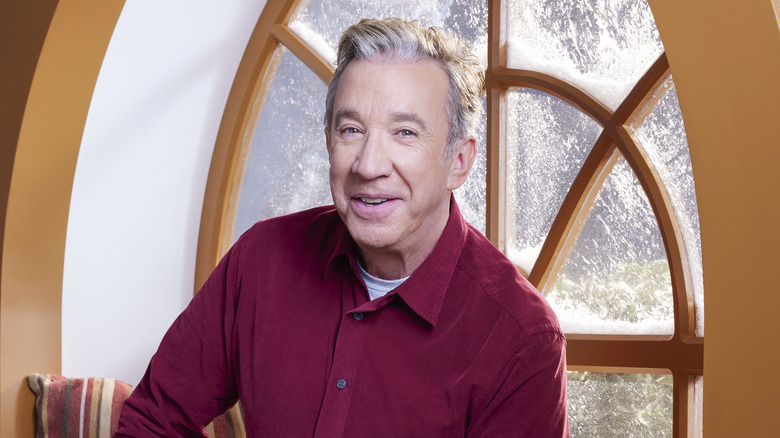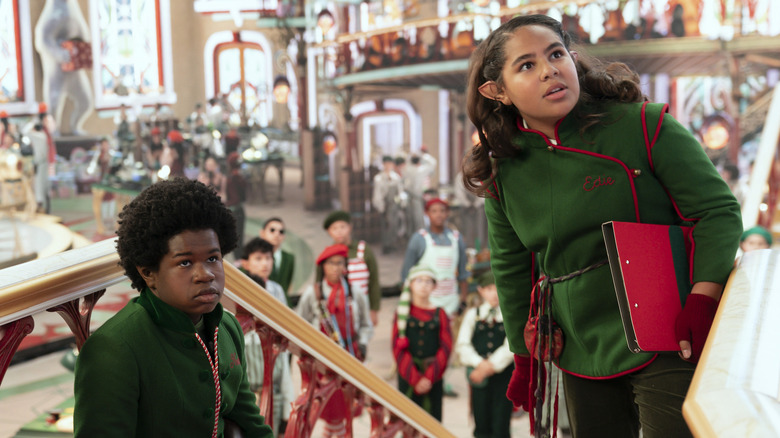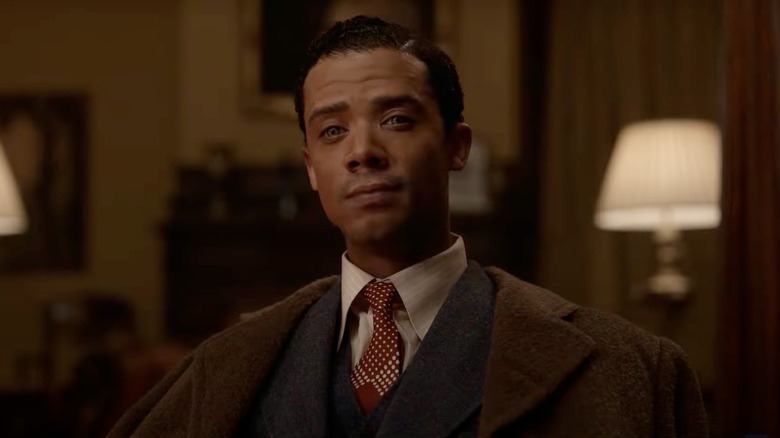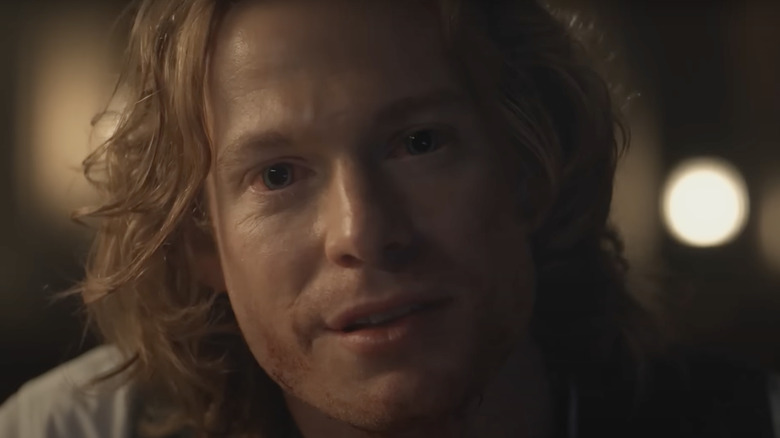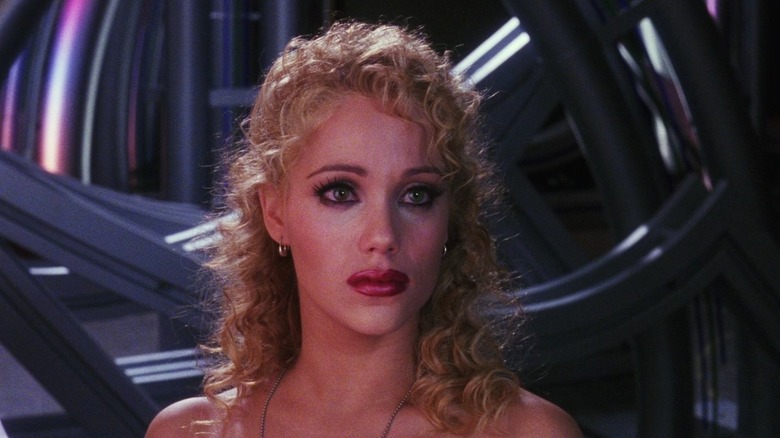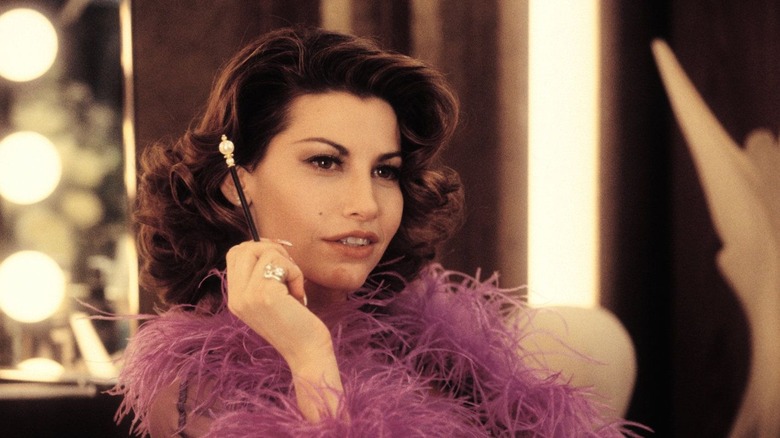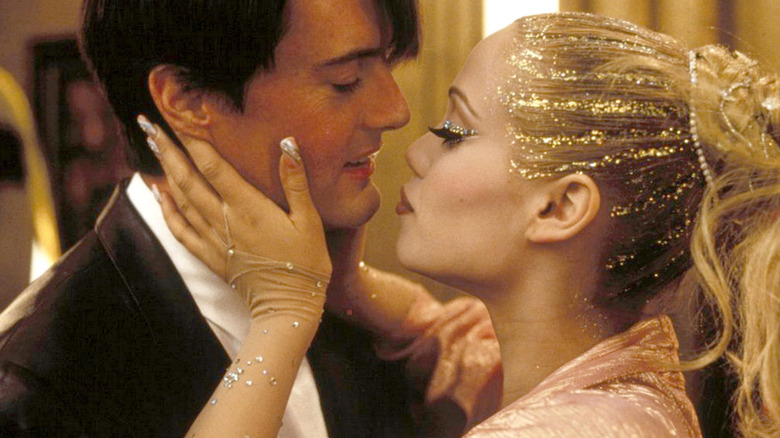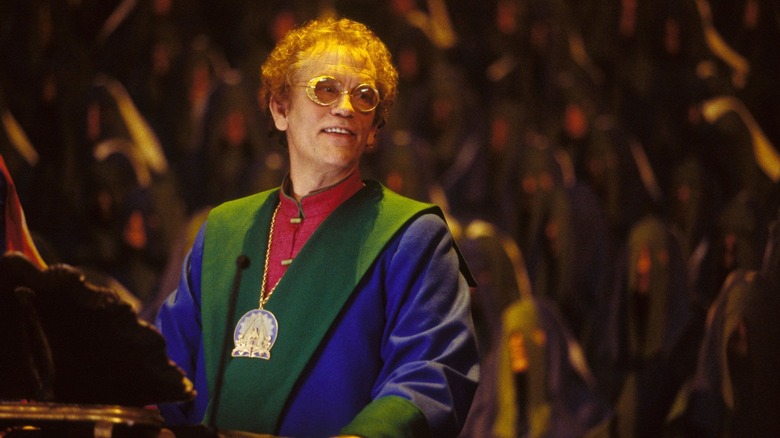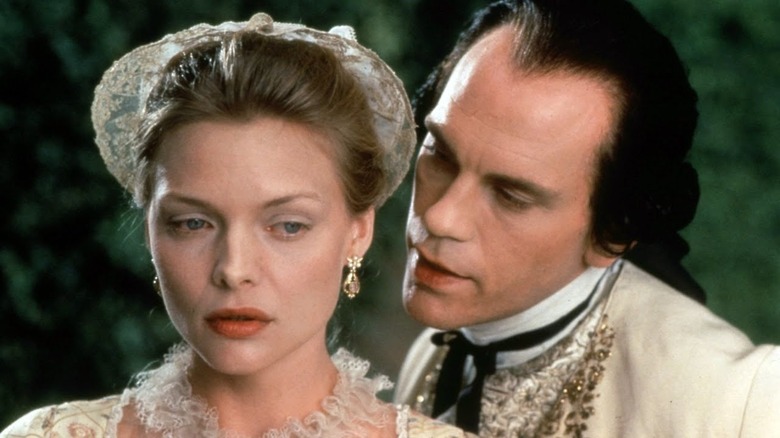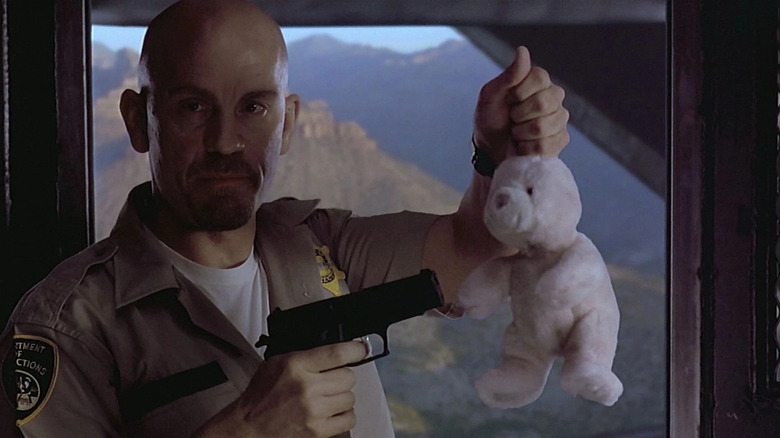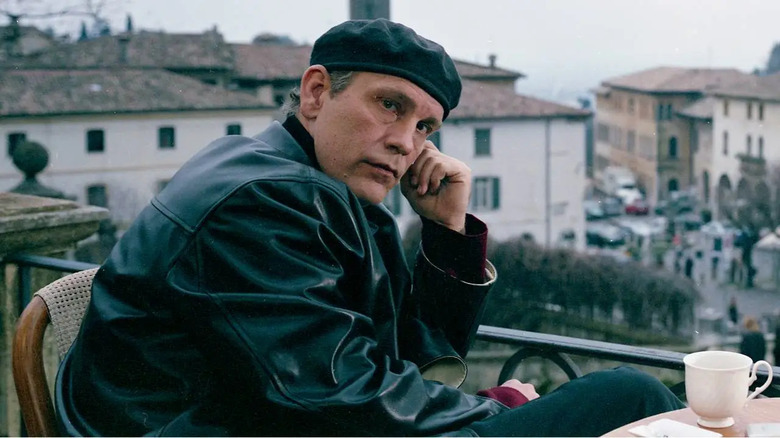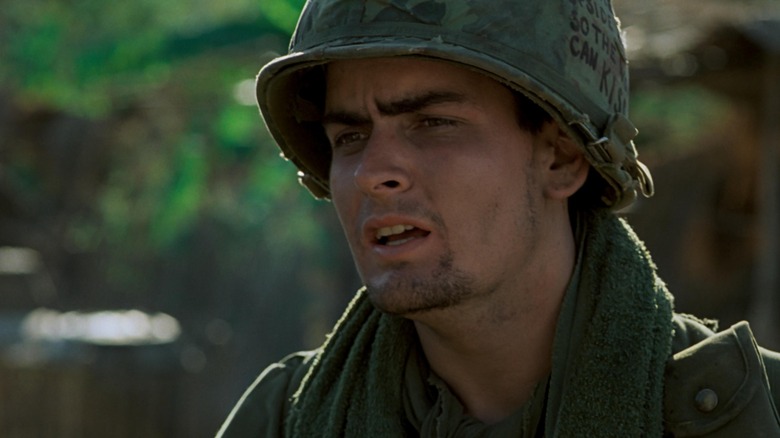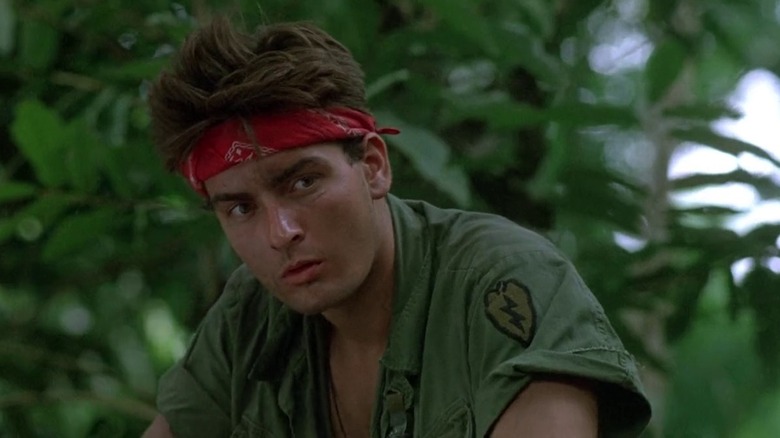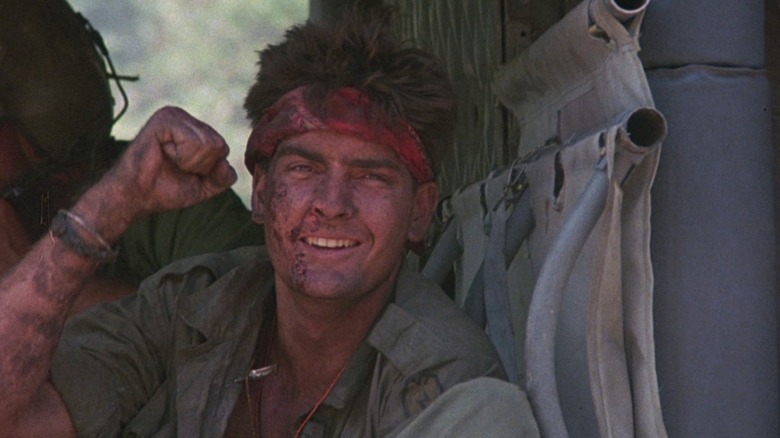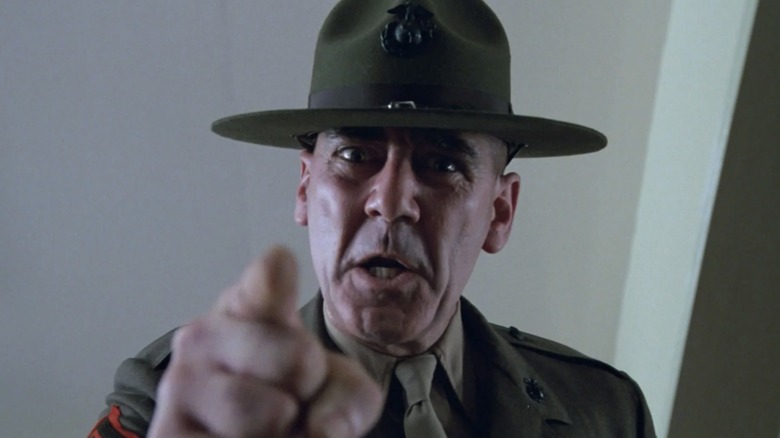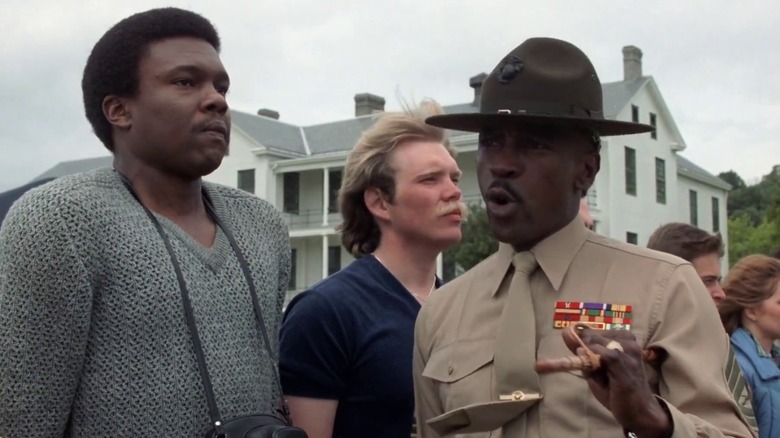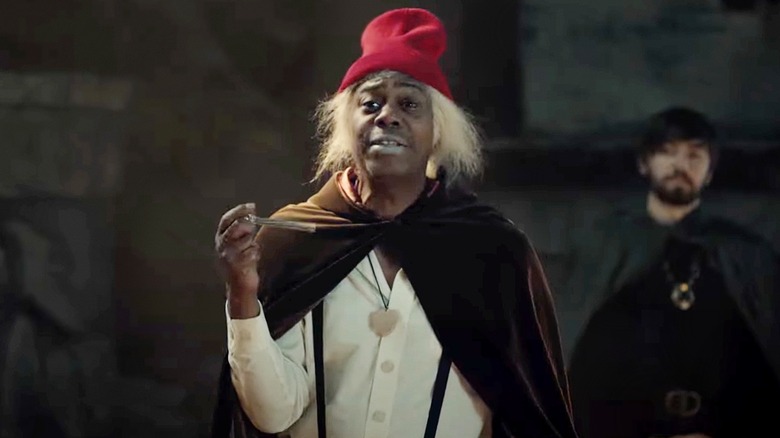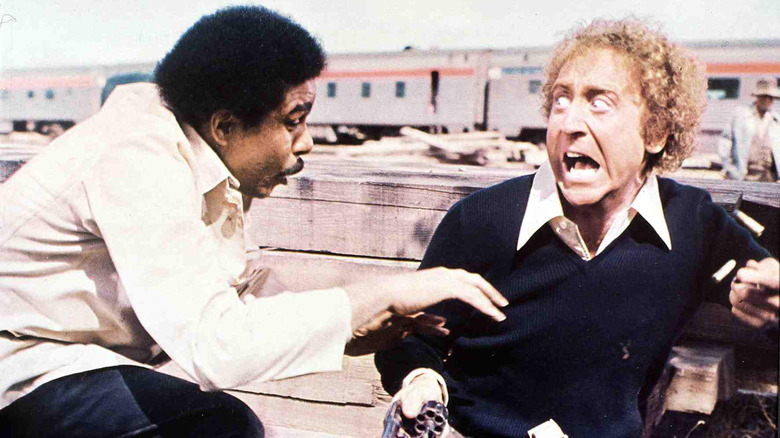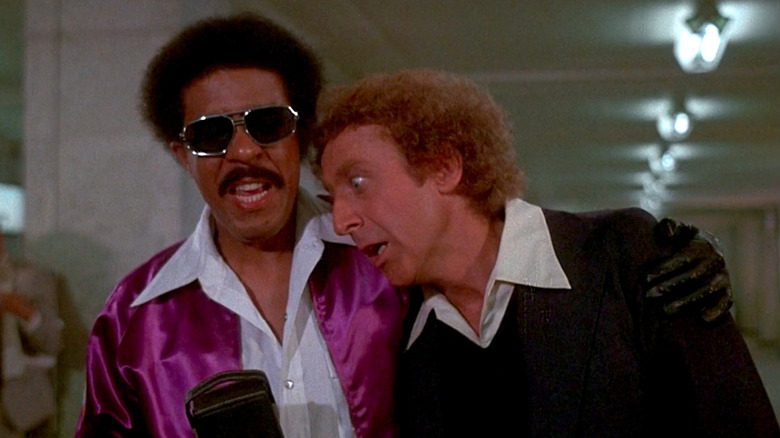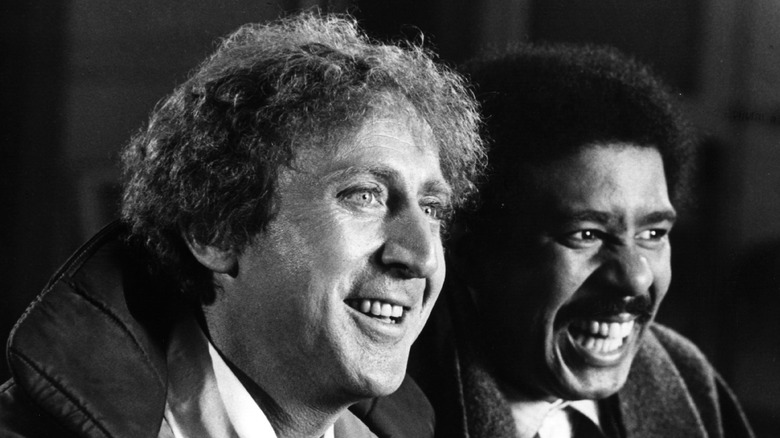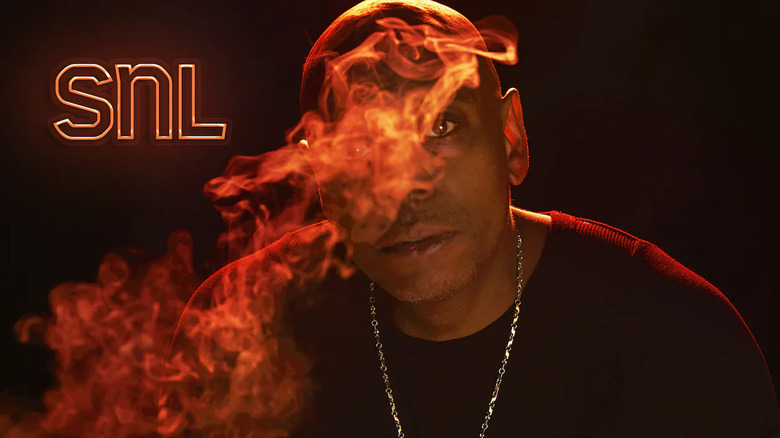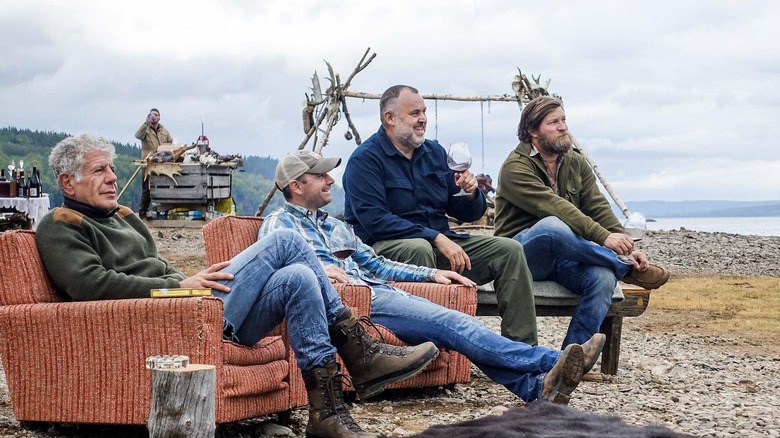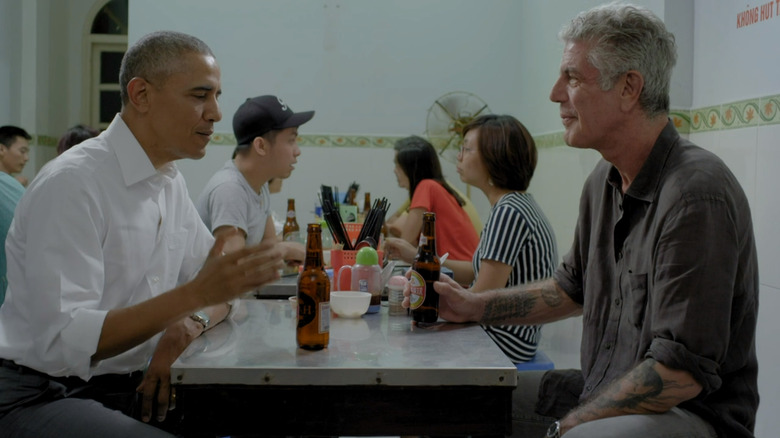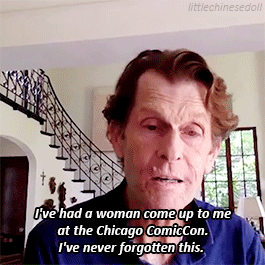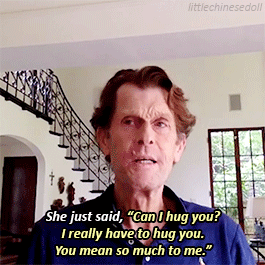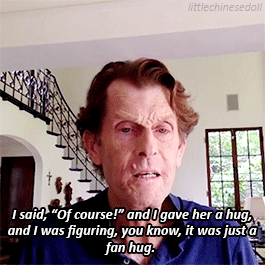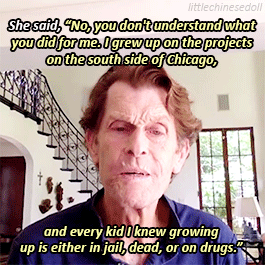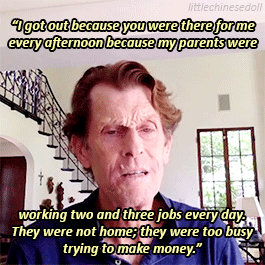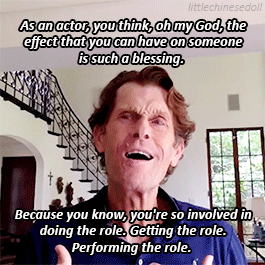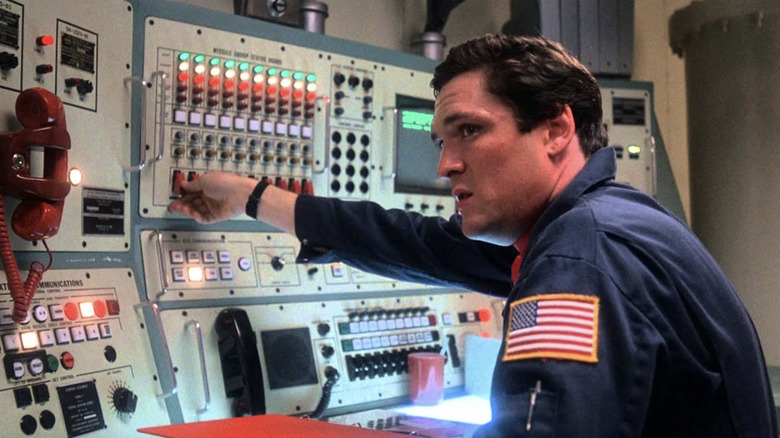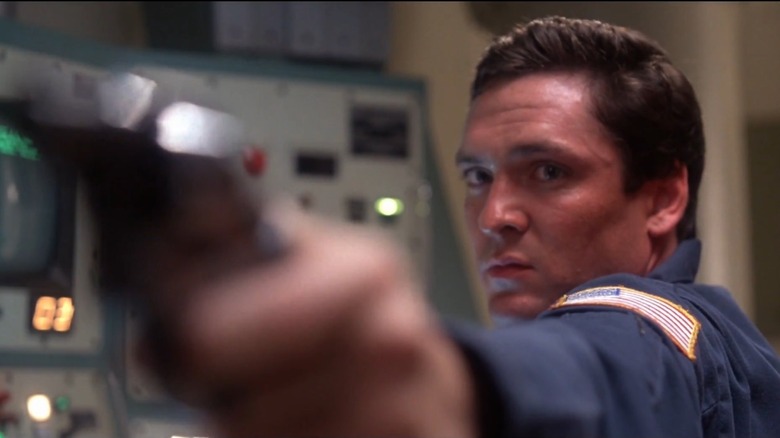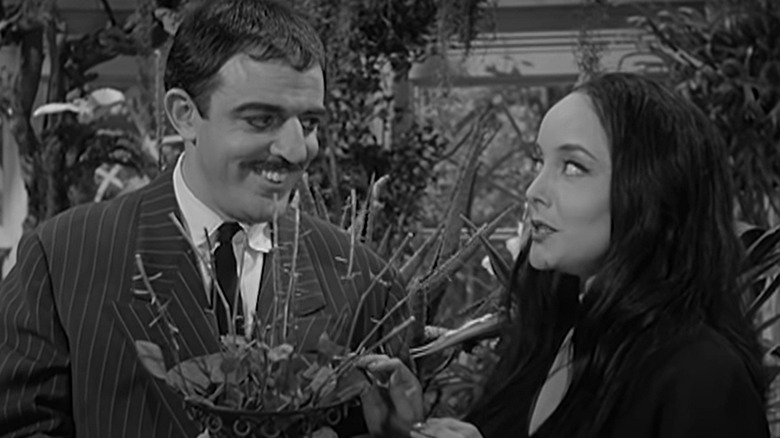
American television has had its share of wacky pop culture families, but surely one of the most unique is the Addams Family. While they may share many of the same qualities as a typical nuclear family (i.e. mother, father, a couple of kids, some pets, in-laws, etc.), the Addamses take the concept to absurd levels with their nonchalant dalliances with the gothic, the ghastly, and the supernatural. What's normal for Gomez, Morticia, Wednesday, Pugsley, and the rest of this clan is the stuff of nightmares for the rest of us.
Nevertheless, that mix of sitcom family hijinks and horror is what makes "The Addams Family" so delightful and what has kept them haunting our magazines, TV screens, movie theaters, and more for decades. It seems that every generation since these characters were first unleashed on an unsuspecting audience in 1938 has its version of the Addamses that they grew up with, proving just how much pop culture staying power they have. So let's take a look at the long and fascinating history of "The Addams Family."
The Addams Family's First Appearance
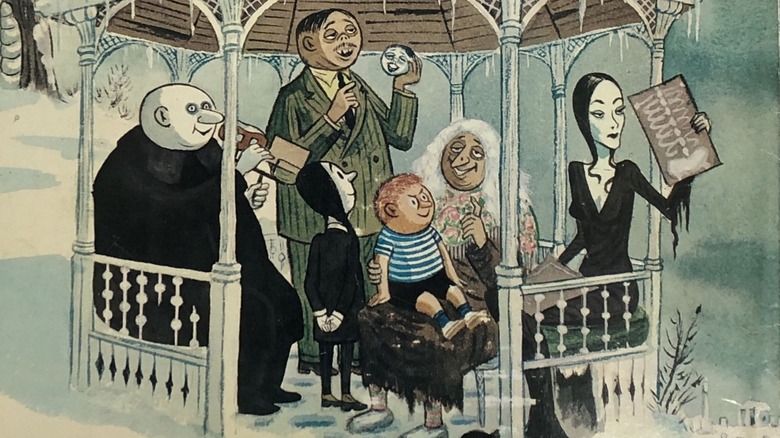
Because "The Addams Family" has such a long history on the big and small screen, it's easy to forget that they made their first appearance on the page. The man behind everyone's favorite morbid family is Charles Addams, a prolific cartoonist who worked for some of the biggest publications of the day, including TV Guide and Collier's.
However, his longest stint was with The New Yorker, to which he contributed around 1,300 cartoons. Interestingly enough, his Addams Family comic strips (which didn't even have a name at the time) made up only 58 entries of the voluminous work he produced for the magazine. The bizarre family made its debut in its pages in 1938. As depicted in the cartoons, the family differs a fair amount from the various incarnations that it inspired in the following decades. Still, many of their classic elements were introduced under the pen of Charles Addams, including the pitch-black humor and satire of the nuclear family. Addams' family would achieve a higher profile with the release of his 1959 collection, "Dear Dead Days: A Family Album," and from there, it would only be a matter of time before "The Addams Family" would hit the mainstream in a big way.
The Addams Family Make Their Small Screen Debut
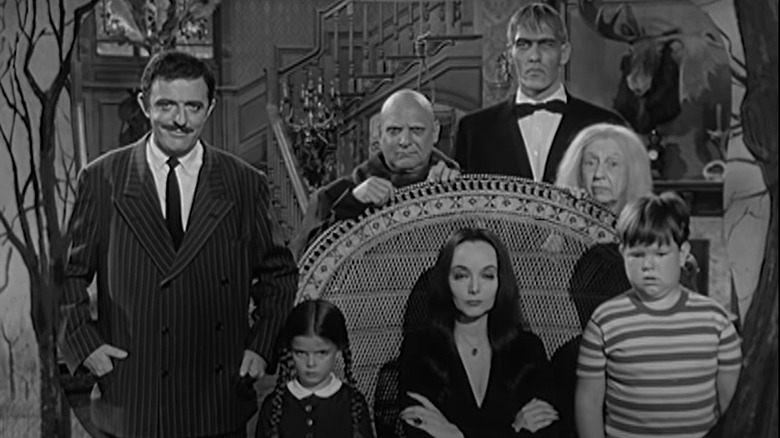
"The Addams Family" made the jump from print to television with their very own series on September 18, 1964. Some of the darker aspects of the source material were toned down (probably from a combination of strict TV standards at the time and out of an attempt to attract a wider audience), but much of the playfully grim humor was retained. One of the qualities of the show that separated it from other sitcoms at the time was that it reversed the usual fish-out-of-water gags typical of such shows as "The Beverly Hillbillies" and instead, made the family out to be normal with visitors being the ones who must get used to their ghoulish lifestyle. Another innovation pioneered by "The Addams Family" is that it portrayed Gomez and Morticia Addams as being far more, ahem, amorous than the usual sitcom couple in an era when onscreen depictions of sexuality (even in marriage) were still taboo.
Unfortunately, Charles Addams was less enthusiastic about the show than viewers. According to Smithsonian Magazine, Addams' biographer, Linda H. Davis, said that he "was up-and-down on the television show. He certainly enjoyed what 'The Addams Family' did for his earning power, but he said the characters were 'half as evil.'" Still, it did bring his creations to a wider audience, and the series is still beloved today.
Lurch Inspires A Dance Craze
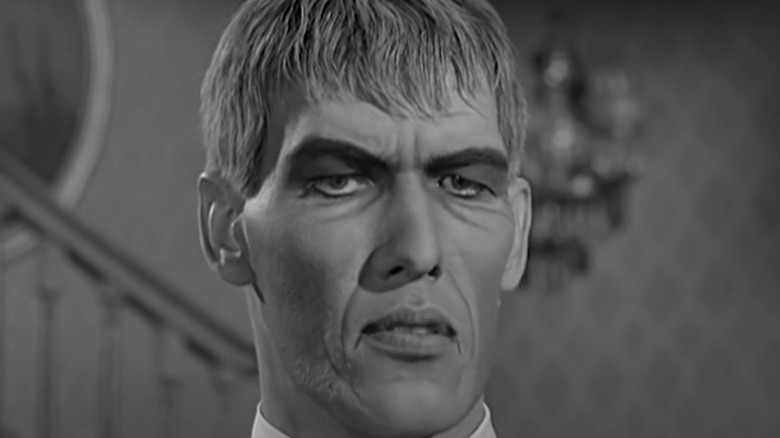
In the first season episode, "Lurch, the Teenage Idol," Gomez is impressed with the Addamses' monosyllabic butler and in-house harpsichordist, Lurch, and convinces a record company to sign him and release an album. Despite mostly consisting of graveyard grunts, Lurch's music is a big hit with the kids, and he becomes a bona fide pop star. The fame gets to his head, however, and he decides to leave his position as a butler to focus on his music career.
While this may sound like simply another whimsical day in the life of the Addams Family, this episode is unique in the characters' legacy, as it had a real-world impact in the form of a brief but popular dance craze creatively titled "The Lurch." The episode inspired a song of the same name by Grammy Award-winning record producer Gary Paxton (who also produced the similarly-themed "Monster Mash"). If this all sounds too nutty to be true, there's a clip of Lurch actor Ted Cassidy dancing to the song on the 1960s music variety show, "Shindig!"
The Addams Family And Scooby-Doo
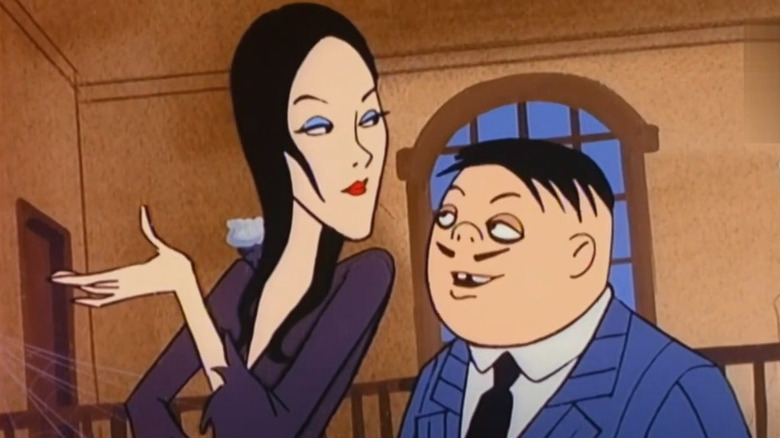
"The Addams Family" may have only lasted two seasons, but it was popular enough to stay in the public's mind even after its cancellation, and it wasn't long before they made their return to the small screen. They would appear on TV again in animated form with another lighthearted comedy horror character, Scooby-Doo, specifically on an episode of "The New Scooby-Doo Movies." Titled "Wednesday Is Missing," the episode follows Scooby and the gang as they experience van problems and are forced to stay with the Addams Family in their creepy mansion until they can repair the Mystery Machine. However, they stumble upon a ransom note that states that Wednesday Addams will meet a terrible fate if the Addams Family doesn't turn their estate over to this evil mastermind.
Scooby-Doo and the Addams Family make a wonderfully fun pairing in this crossover and, as stated in Collider, was a massive hit, guaranteeing that audiences still wanted more of the Addamses. "Wednesday Is Missing" is made all the more special because the original cast returned to voice the characters they made famous. However, because of legal issues, it has never been rereleased, so tracking it down is a bit of a challenge.
The Addams Family Get Their Own Animated Series
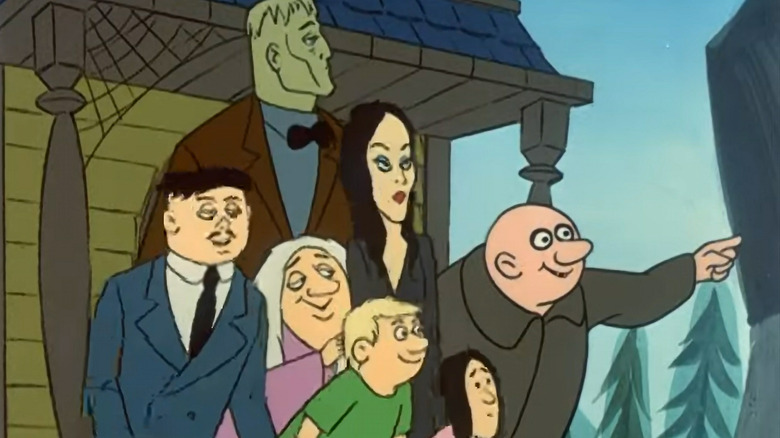
The Addams Family may have had an auspicious animated debut with their appearance on "The New Scooby-Doo Movies," but their next foray into animation wasn't as successful. The premise of "The Addams Family" saw them traveling across the country and finding themselves in a range of spooky and silly adventures — not unlike those experienced by a certain talking dog and his groovy friends.
The series only lasted for one season and is largely forgotten today. It simply didn't have much going for it, as the concept of the show was already put to better use by Scooby-Doo, so it was probably too redundant for general audiences. One of the few bright spots in the animated series was that it brought back Jackie Coogan and Ted Cassidy as Uncle Fester and Lurch, but that's hardly enough to save an otherwise typical early 1970s cartoon (although the show's creators deserve credit for having the Addams Family drive around in a camper that's shaped like their crumbling Victorian home).
1977's Halloween With The New Addams Family Special
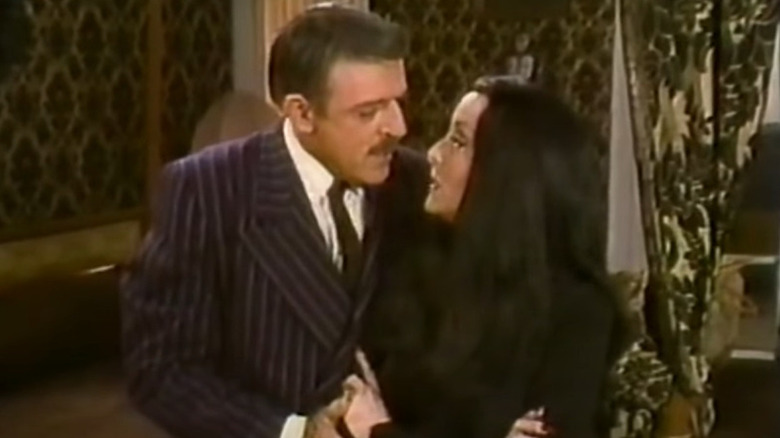
After the macabre family failed to connect with audiences through animation, they returned to TV in live-action form for a 1977 Halloween special. The curiously titled "Halloween with the New Addams Family" (it features the return of the original cast members, making the "new" an odd addition) sees Gomez's brother, Pancho, staying with the clan as Halloween approaches, a holiday they celebrate as if it were Christmas. However, some crooks have set out to steal the Addams Family fortune with a plan that involves kidnapping Gomez and Morticia and replacing them with doubles ... for some reason.
"Halloween with the New Addams Family" is too convoluted for the straightforward formula that typified the franchise at its best. The original cast is noticeably older, but they've retained much of the charm they displayed in their 1960s heyday, and there are a few good gags to (mostly) distract from the overly complex plot.
The Addams Family Makes The Leap To The Big Screen
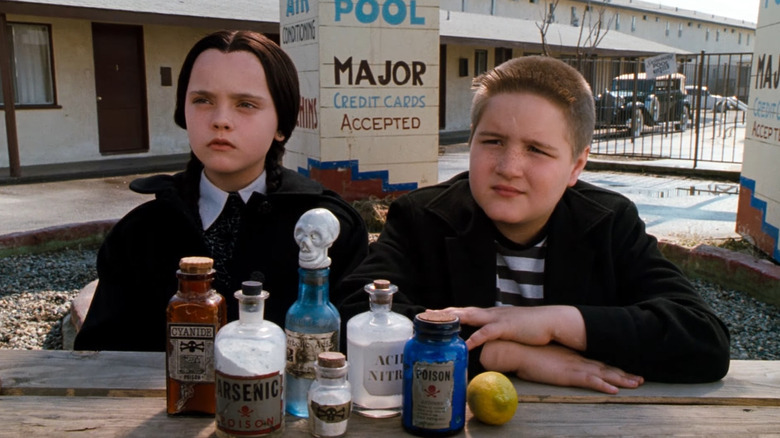
Charles Addams' creation was relatively dormant throughout the 1980s but kicked off the next decade with a bang. Directed by Barry Sonnenfeld, "The Addams Family" features a star-studded cast, including Raul Julia as Gomez, Anjelica Huston as Morticia, Christopher Lloyd as Uncle Fester, and Christina Ricci as Wednesday. The 1991 film follows the eponymous family as they celebrate the return of the long-lost Uncle Fester, who's been suckered into a sinister plan by a couple of con artists looking to steal the Addams Family fortune.
It wasn't an easy film for first-time director Sonnenfeld, who had to contend with the production switching studios in the middle of filming and executives meddling with the project. "The whole second half of the shoot we were working for a studio that thought we were uncuttable and unreleasable, so things got more difficult," explains Sonnenfeld. However, the troubled production managed to power through these obstacles and become a box office hit, reintroducing "The Addams Family" to a new generation.
The Addams Family Goes Animated ... Again
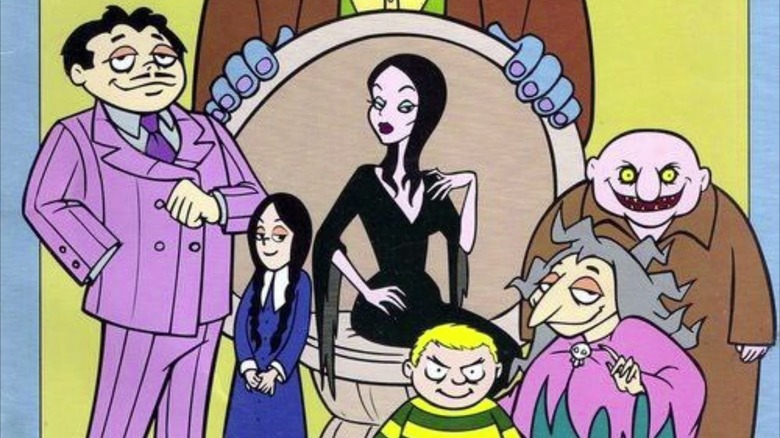
Spurred on by the success of "The Addams Family" in 1991, an animated TV series based on the characters was released the following year. The show followed the family going about their lives in their creepy and kooky gothic mansion, which happens to be located in the bright and cheerful town of Happydale Heights. Since the family is seen as a nuisance in their neighborhood, they must contend with the Normanmeyer family, who are hellbent on ridding their town of those mysterious and spooky Addamses.
Because this animated program was aimed at younger audiences, much of the graveyard humor of Charles Addams' original cartoons had to be tempered for the Saturday morning crowd. There's not a whole lot to recommend the show other than the nostalgia factor for those of us who grew up in the early 1990s, but it did bring back John Astin as Gomez Addams. The show's minimal success was no doubt due to interest in Barry Sonnenfeld's film, but it was popular enough to last for another season.
The Addams Family Pinball Machine

There's no shortage of merchandise based on hit movies, and because it's so common, much of it is pretty cheap and unmemorable. However, a rare exception is "The Addams Family" pinball machine. The machine was released in 1992 by Bally Games and, according to Wired, has become one of the most sought-after and highest-selling pinball machines ever made, with more than 20,000 units sold. That number may not sound too high compared to records sold, but in the pinball world, a hit game usually sells around 8,000 to 14,000 units.
Luck certainly had a lot to do with the success of the game. Clay Harrell, the owner of the Ann Arbor Pinball Museum in Michigan, told Wired that "The Addams Family" pinball machine "checked all the boxes." "The timing of the release and movie, the theme capturing people that remembered the original TV series and the success of the new movie, and the pinball market at the time, which was doing very well," Harrell said. However, the game also included many entertaining features that were not typical of pinball machines made up to that point, giving it an edge over contemporary units and contributing to its legendary status.
Addams Family Values
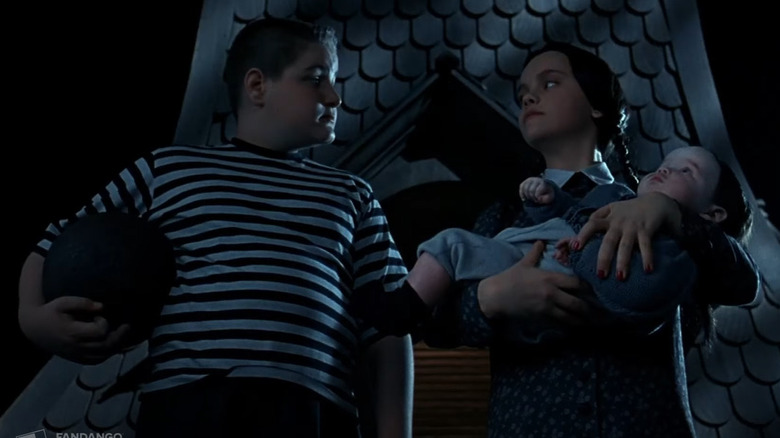
The success of 1991's "The Addams Family" inevitably led to a sequel. In "Addams Family Values," the creepy clan welcomes a new member to their family with baby Pubert. (this is a fun little Easter Egg: The family members didn't have names until the 1960s TV show. According to Smithsonian Magazine, Addams proposed "Pubert" as the name for the son, but it was considered too suggestive for television, so "Pugsley" was the final choice). Meanwhile, Uncle Fester has fallen in love with a woman who, unknown to him, is an imposter who's planning to kill the family and steal their fortune.
While the sequel didn't fare quite as well as its predecessor at the box office, it got better reviews from critics, who praised the film for its more developed characters and stronger plot. Unfortunately, before further films could be made, Gomez actor Raul Julia died on October 24, 1994.
The Addams Family Reunites
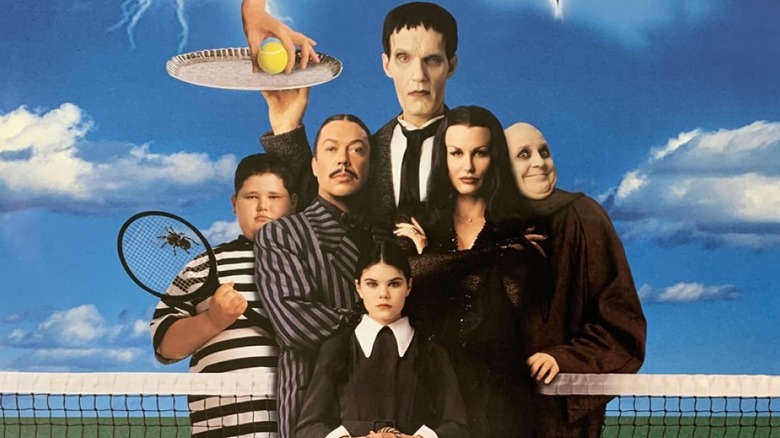
It would be some time before audiences would see their favorite morbid family back on the big screen. To hold them over, a direct-to-video sequel, "Addams Family Reunion," was released in 1998, no doubt in an attempt to capitalize on the waning interest from the previous installment (as well as trying to charm fans with "family" puns. Surely "Addams Family Feud" will be announced any day now). The plot revolves around Gomez and Morticia learning that Grandma and Grandpa Addams have been stricken with the incredibly common disease of normality. They decide that the only way to restore their grim disposition is to organize a family reunion and find a relative who might have a cure. However, a mix-up ensues that results in the Addams Family going to an "Adams" family reunion.
The PG rating prevented "Addams Family Reunion" from going for darker and racier jokes, resulting in a watered-down version of the hit Paramount films. The small production budget didn't help either, but this film is salvaged somewhat by an enthusiastic performance from the always-watchable Tim Curry as Gomez Addams. While "Addams Family Reunion" is not an official sequel to the feature films, it did see Carel Struycken return as Lurch as well as Christopher Hart handily reprising his role as Thing.
The Addams Family Gets A Second Live Action Series
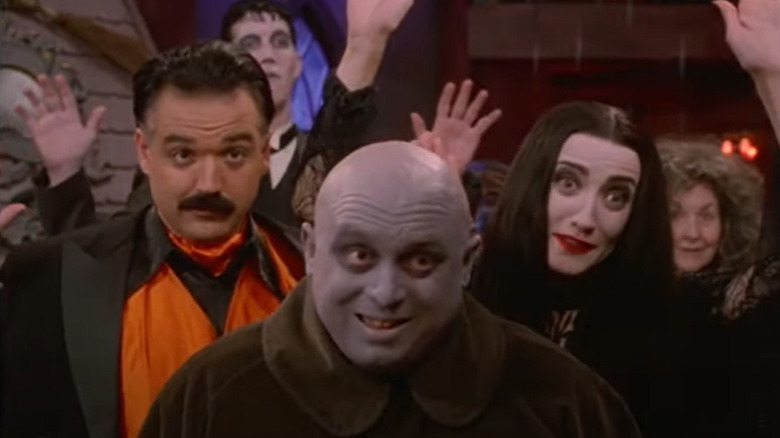
Finally, the "new" in an "Addams Family" property is justified, this time as "The New Addams Family." With a whole new cast and a premise firmly planted in the present, it's actually useful to distinguish this series from previous installments. This version of "The Addams Family" doesn't shy away from the past too much, though, as several episodes are remakes of installments from the original 1960s TV series.
This flat, lightweight one-season series has two things going for it: modesty and nostalgia. The actors do a fine job with the otherwise lifeless material, so it'd be cruel to be too hard on "The New Addams Family." Let's end our assessment of "The New Addams Family" on a positive note. A charming component of this series was that it featured John Astin, the original Gomez Addams, as Grandpa Addams for a couple of episodes.
Tim Burton's Proposed Stop-Motion Version Of The Addams Family

Tim Burton is the perfect choice for an "Addams Family" project. As Barry Sonnenfeld revealed to Variety, Burton was considered to direct the 1991 feature before he ultimately got the job, saying, "I will tell you that there were two other directors approached — Tim Burton and Terry Gilliam — and they're both really good choices. But they both turned it down, so that's how I ended up getting it." While Sonnenfeld did a solid job with his version, one can't help but wonder how a Burton-helmed version of the film would've turned out, considering the neo-gothic aesthetic that is especially characteristic of "Beetlejuice" director's work.
It came as no surprise when, in 2010, it was announced that Burton was tapped to direct a stop-motion version of "The Addams Family." Burton apparently wanted to go back to the biting humor that characterized Charles Addams' original cartoons that rarely appeared in the TV and film iterations. Unfortunately, that project fell apart, and while official details on why are hard to come by, according to Burton it may have had to do with creative differences. The director told Empire that it "never really went anywhere," adding, "I was intrigued by it...but I think they wanted to go a more computer-generated way."
The Addams Family Make Their Broadway Debut
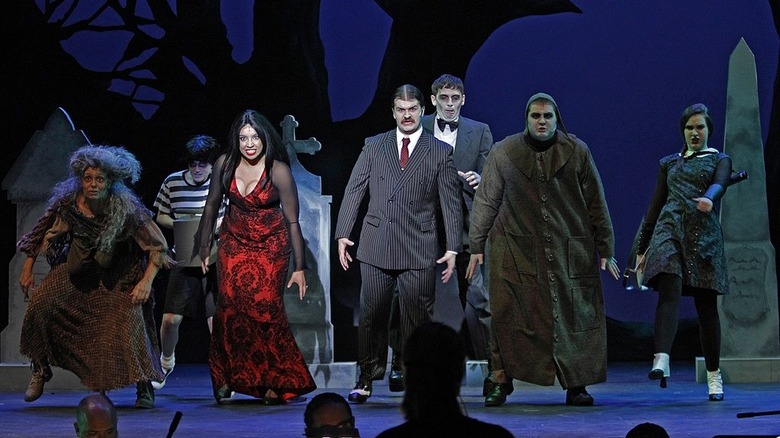
The over-the-top personalities and aesthetics of the Addamses make them ideal for the stage. In April 2010, a musical version opened on Broadway. According to Smithsonian Magazine, critics weren't too thrilled with the production, but it was fairly successful with audiences who kept it running for around two years.
However, the production didn't take off until it left Broadway and toured around the world to big business. It was especially popular with young people, as it became the most performed high school musical in the 2018-19 season. The success of the musical may be attributed to the fact that Andrew Lippa, who wrote its music and lyrics, went back to the gallows humor of Charles Addams' cartoons. Lippa stated that "it's so much fun to get into the dark recesses of kids pulling legs off spiders knowing they shouldn't in a humorous way."
The Addams Family Animated Feature
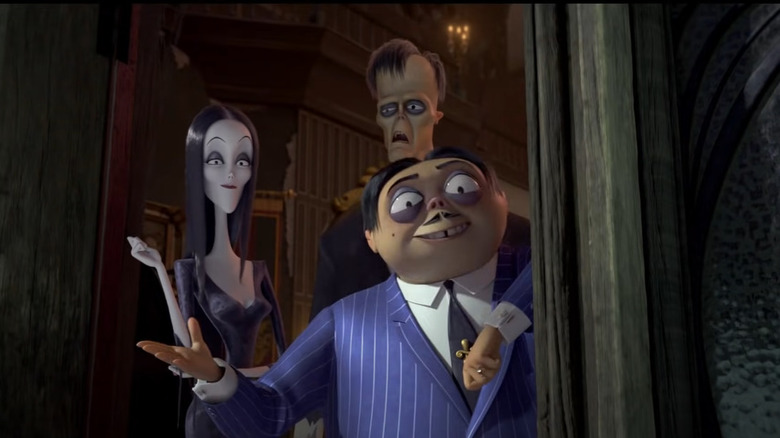
Tim Burton's assessment of why his project never materialized seems to have been correct, as the next time we would see the Addamses would be in a computer-animated film. The plot opens with a flashback to Gomez and Morticia's wedding, which was interrupted by an angry mob that hates their morbid preoccupations and chases them to an abandoned asylum. The doom-and-gloom bride and groom meet Lurch, a former patient of the asylum, and it's there they decide to start a family. Flash forward to the present, and the Addamses have to again contend with a population that rejects them for their gothic lifestyles.
This family-friendly take on "The Addams Family" features an all-star voice cast that includes Oscar Isaac as Gomez, Charlize Theron as Morticia, Chloë Grace Moretz as Wednesday, Finn Wolfhard as Pugsley, Nick Kroll as Uncle Fester, Snoop Dogg as It, and Bette Midler as Grandmama. While the cast does a solid job, the film's approach is a little too sweet for the typically ghoulish material, and that may be off-putting for fans of previous incarnations of the characters.
The Addams Family 2
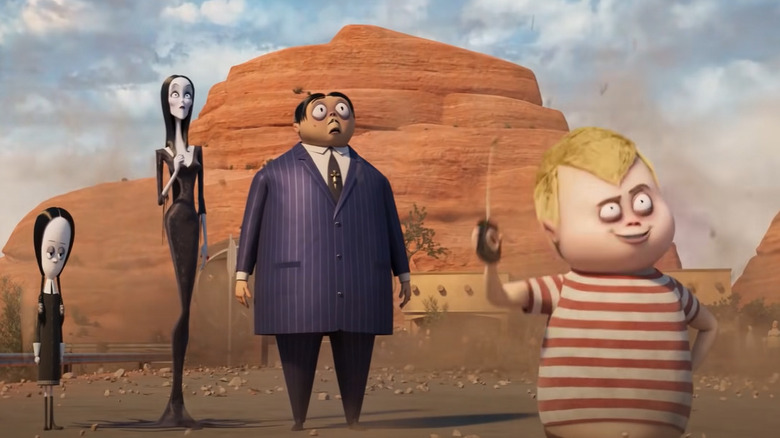
2019's "The Addams Family" wasn't a massive success with critics, but it did pretty well at the box office, which is reason enough for a studio to greenlight a sequel. In this second outing, Gomez and Morticia notice that as their kids mature, they are spending less and less time with the family. To bring everyone back together and reestablish their clan's bonds, Gomez decides to take them all on a cross-country road trip, hitting up expected locations like Salem, Massachusetts, and Sleepy Hollow, New York, along with a stop in Miami to meet with Cousin Itt. Meanwhile, a mad scientist is after Wednesday to use her scientific genius as part of his schemes to create human-animal hybrids.
The terrific voice cast of the previous film returns for "The Addams Family 2," which features a few funny gags and not much else. While there is some delight in seeing the Addams Family taken out of their gothic homestead and experience regular life, the over-reliance on sappy sentiment waters down the eerie appeal.
Tim Burton FINALLY Gets An Addams Family Project
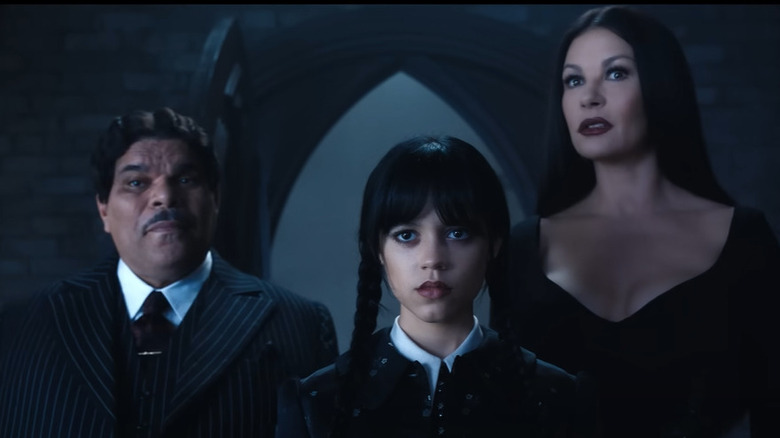
After Tim Burton turned down "The Addams Family" in 1991 and his stop-motion "Addams Family" project fell apart in 2010, the quirky filmmaker and the altogether ooky clan have finally joined for a match made in Hot Topic. The product of this gothic union is the 2022 Netflix series "Wednesday," which follows the woeful character as she adjusts to life as a teenager at Nevermore Academy. What separates this series from other coming-of-age shows is that Wednesday has psychic powers and is on the hunt for a monster that's killing locals, and, of course, her school is named after a line from Edgar Allan Poe's "The Raven."
Jenna Ortega stars as Wednesday Addams alongside Catherine Zeta-Jones as Morticia Addams, Luis Guzmán as Gomez Addams, and a special appearance from Christina Ricci, who played Wednesday in the '90s theatrical films. It's a bit surprising that it took so long for Burton to work on an "Addams Family" project, but we're sure glad that this is the one he ultimately ended up with. The director has always been drawn to outsider protagonists, and it sounds like this series' take on the titular character struck his fancy. He told Empire, "When I read this [script], it just spoke to me about how I felt in school and how you feel about your parents, how you feel as a person. It gave 'The Addams Family' a different kind of reality. It was an interesting combination."
Read this next: Horror Remakes That Are Better Than The Originals
The post The Addams Family Timeline Explained appeared first on /Film.
